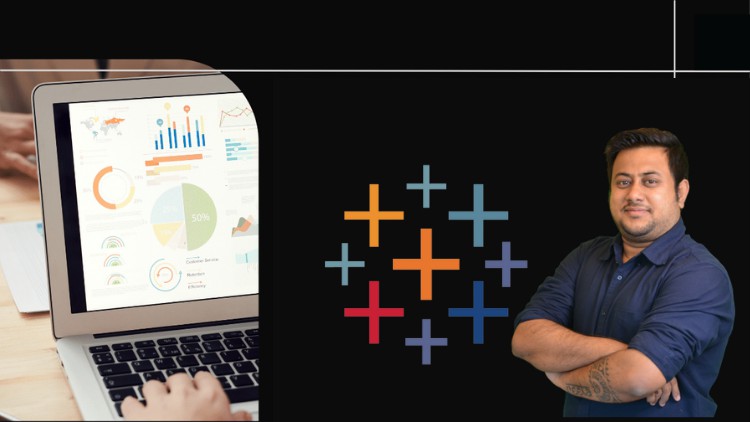
Master Tableau within few hours & Be Ready to jump into the domain of Analytics
What you will learn
Create bar charts, pie charts, and line graphs
Create calculated fields with conditional logic.
Create dynamic dashboards combining multiple worksheets.
Combine multiple data sources using joins, blends, unions, and relationships.
Learn various Analytical capabilities of Tableau such as Forecasting, Reference Lines, Clustering etc.
Learn everything about Level of Detail Expressions
End to End learning on Tableau
Description
Tableau is the solution that thousands of companies use today as they struggle with their big data issues. Working with Tableau isn’t just lucrative – it’s fun! And unlike most data analysis tools, Tableau uses a drag-and-drop interface, so you don’t need to be a programmer to learn Tableau.
Get Started Today!
Learn and Apply Fundamental Skills
Get a step-by-step walk-through of the fundamentals of data visualization and data discovery with Tableau. You’ll learn how to:
- Sort, filter, and group your data
- Create tables, bar charts, line charts
- Show location using geographic maps
- Aggregate with sum, average, min, max, and counts
- Create new fields using calculations
- Combine data using joins, blends, unions, and relationships.
You’ll learn all of the features in Tableau that allow you to explore, experiment with, fix, prepare, and present data easily, quickly, and beautifully.
Contents and Overview
This course begins with Tableau basics. You will navigate the software, connect it to a data file, and export a worksheet, so even beginners will feel completely at ease.
To be able to find trends in your data and make accurate forecasts, you’ll learn how to work with data extracts and timeseries.
Also, to make data easier to digest, you’ll tackle how to use aggregations to summarize information. You will also use granularity to ensure accurate calculations.
In order to begin visualizing data, you’ll cover how to create various charts, maps, scatterplots, and interactive dashboards for each of your projects.
You’ll even learn when it’s best to join or blend data in order to work with and present information from multiple sources
By the time you complete this course, you’ll be a highly proficient Tableau user. You will be using your skills as a data scientist to extract knowledge from data so you can analyze and visualize complex questions with ease.
- You’ll be fully prepared to collect, examine, and present data for any purpose, whether you’re working with scientific data or you want to make forecasts about buying trends to increase profits.
Content